CRY’s Research Fellows – both past and present – have an outstanding reputation of submitting and publishing papers, sharing and showcasing their projects with peers and key decision makers and presenting findings at UK and international conferences.
The issue around the impact of exercise and physical activity on young people living with a heart condition is something that is much debated amongst both physicians themselves on the ‘conference circuit’ and often comes up at CRY’s myheart meetings, too. Indeed, CRY’s cardiology experts are commonly asked, ‘is it safe for me to exercise?’ or ‘should I even break into a sweat’.’
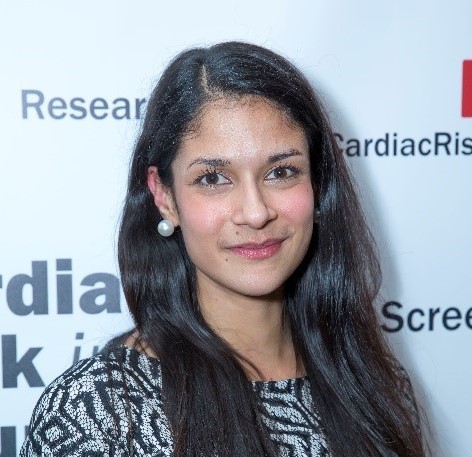
We’re therefore delighted – during Heart Month 2024 – to be profiling the work, research and academic achievements of former CRY Research Fellow, Dr Joyee Basu, who has now returned to Oxford University Hospitals NHS Foundation Trust where she is working as a final year cardiology registrar and continues to advocate for the benefits of cardiac screening and cardiac rehabilitation to help people with a heart condition get back to regular exercise.
In fact, the issue of ‘safe levels of exercise’ for patients living with a condition called hypertrophic cardiomyopathy (HCM) came under the media spotlight recently as C4 Newsreader, Krishnan Guru-Murthy spoke openly about his own diagnosis with HCM and the additional consideration he needed whilst taking part in the 2023 Strictly Come Dancing competition.
With due care, advice and monitoring by his cardiologist, Krishnan didn’t let his HCM hold him back and after months of rigorous training he successfully made it to the 7th week of the gruelling (although glamorous!) show.
And in a full page feature in the February 2024 edition of Runner’s World magazine, CRY supporter Tim Ward (an HCM patient, with an implantable cardioverter defibrillator (ICD) fitted – and who took part in Dr Basu’s key research trial at St George’s, University of London) was quoted as saying; “The trial showed I could exercise below my theoretical maximum threshold without being at risk and it was fantastic to find those answers about myself whilst also helping others living with heart conditions. Running continues to be the way I can destress, spend time outdoors and enjoy the social benefits of Park Run. When I was diagnosed, I thought my life would never be the same again; in some ways it’s not but in others it’s a case of carrying on doing what I love – including running.”
So, here, we chat to Dr Basu to find out more about her fascinating research projects, the proposed practical application of her findings and the difference it could bring to people diagnosed with HCM.
Dr Basu also talks about the lessons she learnt from being part of CRY’s pioneering cardiac screening programme, thanking the Alex Reid Memorial Fund which supported her research and how she’s helping to spread the word about CRY’s work.
Firstly, congratulations on the recognition and interest around your very well-received presentation at the European Society of Cardiology (ESC) Conference last summer (August 2023).
Can you talk through the focus and objectives of this piece of research [“Mechanisms of adaptation to high intensity exercise in HCM”] and explain how this project evolved from your original CRY-funded trial back in 2019/20? [“Safety and outcomes of a structured exercise programme in young patients with HCM”: The SAFE-HCM trial].
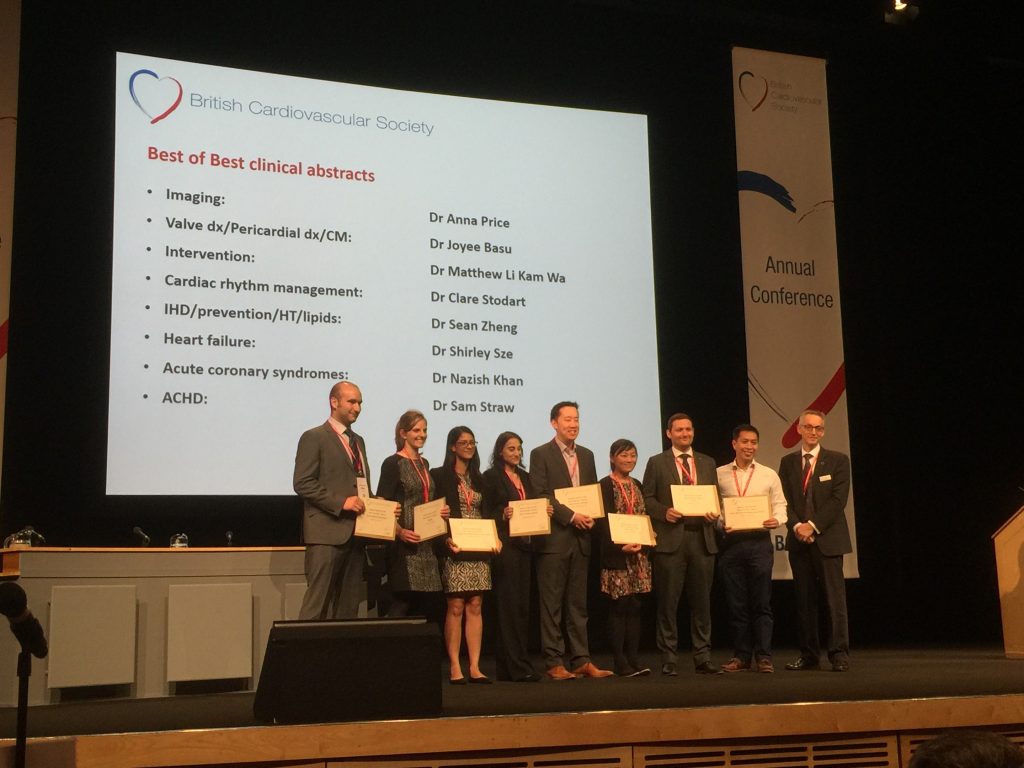
“It was a real honour to present at the ESC last year where I shared the findings from an important sub-study of my CRY-funded research project.’
‘’In the original SAFE-HCM study we placed 40 individuals with HCM into a high intensity exercise programme and 40 individuals into a ‘usual care’ group (i.e. they carried on with life as usual)’’.
“It was so encouraging to see a real improvement in the exercise capacity of those who exercised in the ‘high intensity’ group when compared to those in the ‘usual care’ group.’’
“We then went on to explore how these improvements in exercise capacity might have occurred. I was particularly excited about investigating this because we knew there hadn’t been any previous studies into the mechanisms of adaptation to high intensity exercise in HCM’.
“Many individuals with HCM demonstrate exercise limitation, whether that’s due to their underlying cardio-respiratory fitness, their body mechanics or body habitus (physical build), which can affect the general population too, or the way their heart pumps blood around the body (central factors), and/or how efficiently they are able to extract oxygen from the blood (peripheral factors). So, I was particularly keen to understand whether improvements in these central/peripheral factors might be responsible for the observed positive adaptation to exercise.
“We found that the cardiac output – i.e. the amount of blood your heart pumps around the body in a minute (driven by the amount of blood pumped per heartbeat) increased, which led us to conclude that there was a favourable, central adaptation to exercise and that the heart was pumping more efficiently as a result of the training during the exercise programme.
“I realise this is a complex idea to ‘get your head around’ for non-medics (which I hope I’ve simplified here!) but the fact that there may be beneficial effects of exercise in those with cardiomyopathies is a positive message for fellow clinicians and our wider CRY community to hear.’’
Can you tell us a bit more about your motivations behind this research?’
“The drive behind my research into patients with HCM (who make up a significant proportion of my patients, being the most common type of cardiomyopathy) came from my own experiences and what I had read about attitudes towards exercise in these individuals. A large proportion of individuals are/or have been told to significantly limit their exercise. That’s historically because HCM patients were believed to be at a greater risk of cardiac arrest and, potentially death, during exercise. In the past the ESC and other medical bodies reached a consensus that these individuals should be restricted to engagement in very low intensity exercise.’’
“As such, this led to a generation of HCM patients becoming incredibly sedentary, with around 55% of those who’d been diagnosed with the condition reportedly not even doing the ‘bare minimum’ of physical activity – something which can in turn lead to obesity and increase the risk of cardiovascular disease, not to mention the huge psychological impact. Just imagine you’re someone who had previously enjoyed sport and regularly exercised – to be suddenly told you must immediately stop.’’
“I started by exploring more of the emerging, contemporary evidence which was increasingly suggesting that this might not be the entire story…’’
“I was aware there’d been some more investigations into the benefits (and potential risks) of moderate exercise, although these studies had only been carried out in middle-aged to older patients. But encouragingly, even these studies had shown an improvement in the participants’ exercise capacity, without any signal for an increase in adverse effects.
“There’d also been some general population studies (although again only really looking at older people, engaging in moderate intensity activity) and these had reflected a reduction in mortality risk. We also conducted a study into the effects of exercise on heart structure and function as well as outcomes in athletes with HCM and found that there was no increase in serious adverse events. More recently, a project called the LIVE:HCM study has also looked at individuals who self-reported their levels of activity, and the authors found there was no difference in outcomes between those who engaged in vigorous exercise and those who engaged in moderate/low intensity exercise.
“But a lot of these were small studies lacking long term follow-up and nobody had looked into a randomised, controlled trial (RCT), specifically investigating high intensity exercise which is where our SAFE:HCM trial came in. That’s why I was so delighted when it was agreed that CRY’s Research programme would fund the pioneering study – more of that later…!’’
“In essence, we randomised individuals with HCM to high intensity exercise which had never been done before (vs. ‘usual’ care) and interestingly we observed beneficial effects in the following areas:
- Risk factor profile (reduction in blood pressure and weight loss)
- Exercise capacity
- Psychological impact (including factors such as depression and anxiety)
There was also no increase in heart rhythm abnormalities.’’
“Importantly, we showed it was feasible and could be ‘safe’ to carry out this type of study with this specific group of patients – which again, was a really positive step and paves the way for future studies.’’
‘’I do have to caveat at this point though that the study was small, the participants were also relatively low risk and in good health. So, moving forward, I would definitely want to see larger, multi-centre randomised trials with longer follow up to help really progress our understanding’’.
“For now, we still have to be careful and take a very personalised and individual approach to safe “exercise prescriptions” but we can begin to feel confident about not having to limit and restrict all patients with HCM in their levels and intensity of exercise. It’s all about risk-stratifying individuals into the appropriate groups for the type of physical activity they would like to participate in.”
How do these findings translate to clinical setting and the decisions that physicians might have to be making on a regular basis?
“I do understand that at first glance my findings might go against the guidelines and advice we’ve historically followed. However, the way we’re looking at this now is that individuals should be risk stratified and they should be part of a shared decision-making process with their cardiologist, to help them understand their limits and to ensure they are kept well-informed of any activities which might be considered potentially dangerous. It’s not a doctor’s role to say ‘no’ without explanation and to adopt an overly prescriptive approach but to talk through the possible risks and to decide together. Of course, if we ever felt a patient might want to do something particularly risky, then there might be occasions when we say we would strongly advise against something.’’
“However, as doctors, we should ensure that we thoroughly investigate our patients, looking out for red flags. These may include previous cardiac arrest, exercise induced fainting, evidence of heart rhythm disturbances, abnormal blood pressure or heart rate responses during exercise tests, genes that might predispose to worse outcome and scar within the heart etc’. Armed with a full medical background, we will increasingly be able to take a personalised approach with our advice.’’
“I have first-hand experience of managing individuals with HCM who have elite athletic sporting backgrounds, and this really takes our insight and experience to a new level. We have to carefully consider how we mitigate risk through thorough assessments and regular surveillance to ensure we’re doing all we can to prevent a cardiac event.
‘Through CRY-funded research we have shown that in athletes where we have adopted this approach, there is no signal for adverse events or worsening of their underlying HCM but ultimately it always comes down to tailoring the exercise prescription to the person you have in front of you.”
So, in summary, what are the main findings of this research and how might your conclusions positively impact people living with a diagnosis of hypertrophic cardiomyopathy?
“The results of this initial trial show that in the “right patient with the right risk factor profile” we should now be able to ‘allow’ them to do more exercise than they once thought possible’’.
“That’s of course not to say that everyone with a diagnosis of HCM could, and should, be doing high intensity exercise – but we really hope the findings of my research are laying the foundations for clinicians having more confidence in advising a proportion of our patients that it is safe to do so. I’m hopeful that in the future, larger studies with a longer-term follow-up will provide more evidence to further cement these results’’.
“On a personal level, I’m so passionate about making sure that everyone can safely exercise at some level, as the benefits on overall physical and mental health are indisputable’’.
How would you like to see the knowledge gained from you research/patient trials, rolled out in a ‘practical and accessible’ way?
“I am now really committed to developing an ‘exercise prescription’ document for clinicians so that they can guide their patients through their options for exercise. Such resources could serve as a useful reference point for cardiologists as well as other physicians, who might want to update their knowledge on the latest guidelines and patient advice, as well as learning more about inherited cardiac conditions and the benefits of exercise rehabilitation.’’
“There is a lot of generic advice that is not routinely passed on such as appropriate warm-ups and cool downs, modifications in use of weights, encouraging consistent rather than stop start activities etc which could also be packaged into such an exercise document. My hope is that once the relevant baseline test results, and risk assessments are performed for each individual with HCM, physicians will become more confident about prescribing low, moderate or high intensity exercise’’.
‘’ I am also working on creating a cardiac rehabilitation programme for patients with HCM, something that the NHS is currently lacking, to help individuals to “get into” exercise (particularly those who might have previously been told it was unsafe to take part) with advice and guidance on low to moderate intensity exercise)’’. I am hoping that this could be paired with a patient resource (whether on printed, downloaded ‘sheets’ or filmed and uploaded to an easily accessible YouTube channel, perhaps hosted by an organisation such as CRY)’’.
“Ultimately I hope that patients will feel more empowered and challenge their physician about any previous advice they may have been given about avoiding exercise!”
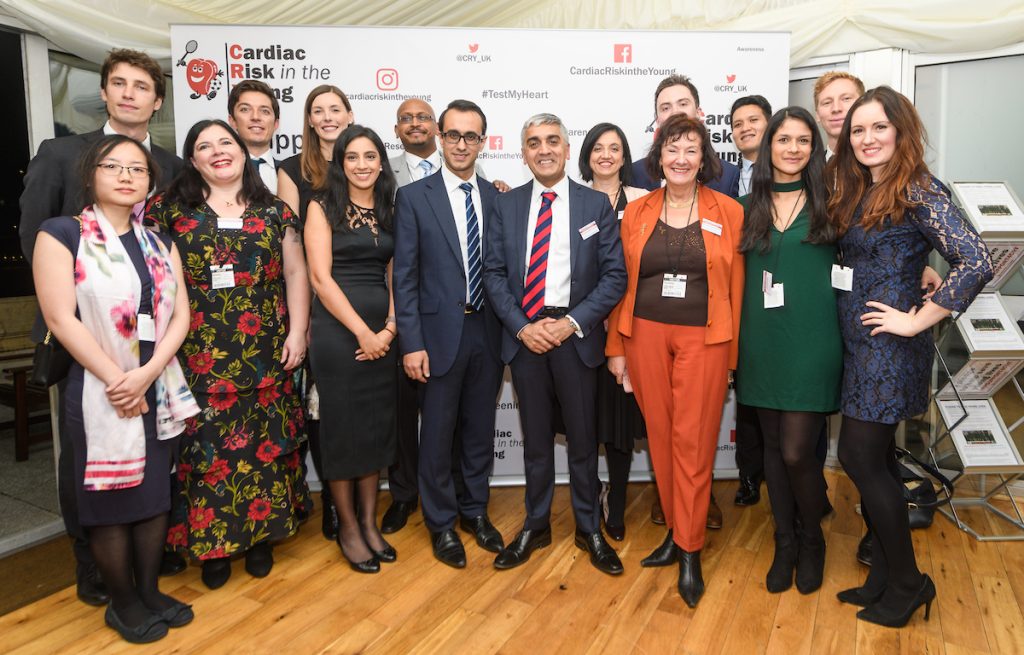
“I have to admit that before I joined CRY’s Research Fellow Programme and had the privilege of working alongside Professors Sanjay Sharma and Michael Papadakis, I simply didn’t know enough about ‘exercise prescription’. It’s therefore amazing to think that I – and all the other Research Fellows trained by CRY –can move on into future clinical roles, in different hospitals across the country and spread the word about the education we’ve had.’’
“I believe that’s part of our duty as a CRY Research Fellow!”
Following your research fellowship with CRY, you returned to a clinical role – but can you tell how important it is for you to stay involved with research projects, presenting at major research conferences etc.
“So, as you might imagine, working as a cardiology registrar is a pretty full-on role. But I did miss the acute medicine side of my job whilst I was fully immersed in research so yes, it’s good being back treating patients.’’
“Since my 3-years with CRY, I have by no means lost my passion for inherited heart conditions and now am very much involved with the inherited heart conditions service in Oxford where I continue to do clinics and attend MDT [multi-disciplinary teams] meetings. Due to my experience with CRY and subsequent reputation as a researcher, I am often asked specific questions about exercise rehabilitation by colleagues and safe levels of exercise. It’s always nice to know that I am bringing useful information and insight to my new hospital from my time at St George’s.
“I also regularly help to recruit patients for trials that are ongoing in Oxford including at the moment for studies into novel therapies for HCM but my main motivation is a commitment to innovation within the NHS, which is really where my idea for a cardiac rehabilitation programme for patients with HCM first stemmed from, using my research background to do something really practical and accessible ‘on the ground’ which will ultimately benefit our patients.’’
“I hope that by presenting my research and speaking at conferences, I’ll be playing a part in keeping our wonderful CRY families – who contribute to generously to the research programme – up to date with the tangible outcomes of our work and demonstrating the positive impact on individuals who’ve been diagnosed with a heart condition (very possibly picked up through CRY’s screening programme).”
So, looking back…why did you first decide to apply for a CRY Research Fellowship?
“Well, as a trainee cardiologist, you really don’t get to learn too much about inherited heart conditions and sports cardiology (as that’s considered a sub-speciality) but I kept hearing about all the amazing research coming out of St George’s, University of London – mainly via Dr (now Prof!) Aneil Malhotra who’d been my Registrar at the hospital we were working together at in Oxford and who’d secured a coveted place on the 3-year CRY Research Fellow programme.’’
“So, I looked into the application process and became fascinated by the work being led by Professors Sharma and Papadakis – as well as reading up on CRY’s pioneering screening programme which feeds into the research centre at St George’s, and which at the time was a concept I knew very little about.’’
“I applied and despite it being a highly competitive process, I was lucky enough to be awarded a Fellowship. I started in October 2016 and the rest, as they say, is history!’’
What were your main highlights during this time – both in terms of research outcomes / awards / professional recognition, as well as your experience of working with CRY’s screening team around the country?
“There are also too many highlights to mention – but I think I absolutely have to start with CRY’s ‘families’. During my time working with CRY’s screening programme up and down the country, it was always so incredible and inspiring to see human resolve in action.’’
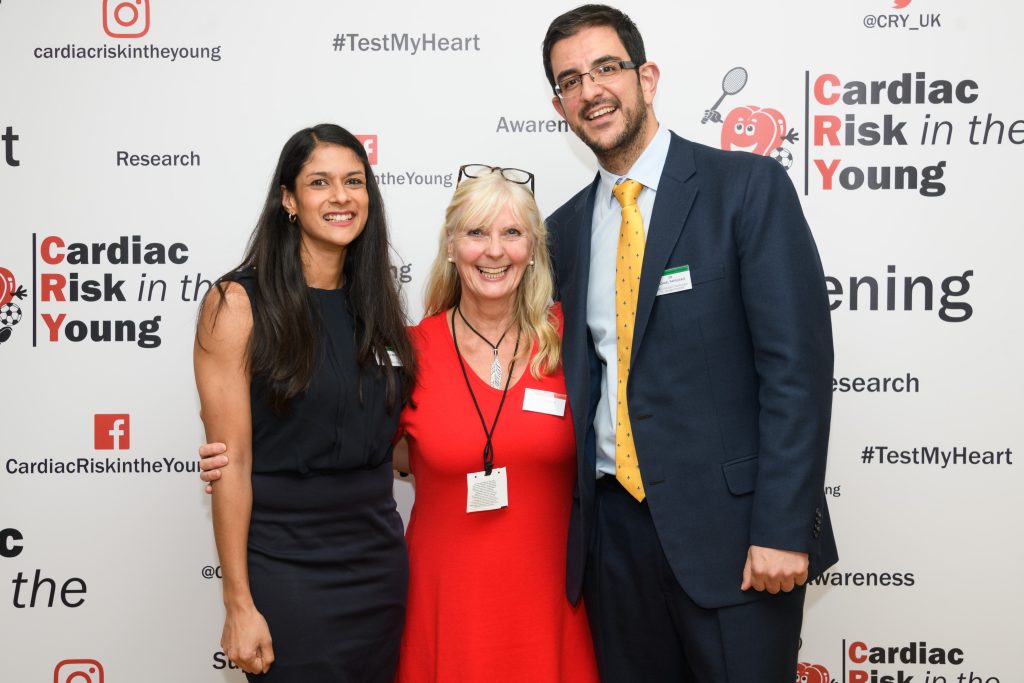
“And, I would like to take the opportunity to give a particular thank you to Heather and John Reid, whose 16 year old daughter so sadly passed away in 2012. They really were the reason that I was able to get all this ‘done’ as they generously funded my research project through Alex’s Memorial Fund with CRY.’’
“The way that humans can somehow turn tragedy into a positive is something that I learnt so keenly from my time with CRY – and is 100% something which I took away with me from my training as a CRY Research Fellow.’’
“Screening was sometimes tough – being out and about, all over the country, often after a busy week at work but the minute you met the family who’d funded the screening session that were attending and helping to manage for the weekend, all of that dissolved. You always realised the importance of what you were doing and the impact of screening.’’
“I presided over the screening of thousands of young people across the course of 3 years and not only did that give me huge professional experience in terms of looking at so many ECG tracings and gaining such a thorough understanding of what’s ‘abnormal’ but I really appreciated the ‘on the ground’ effect of what we were doing as CRY Research Fellows.’’
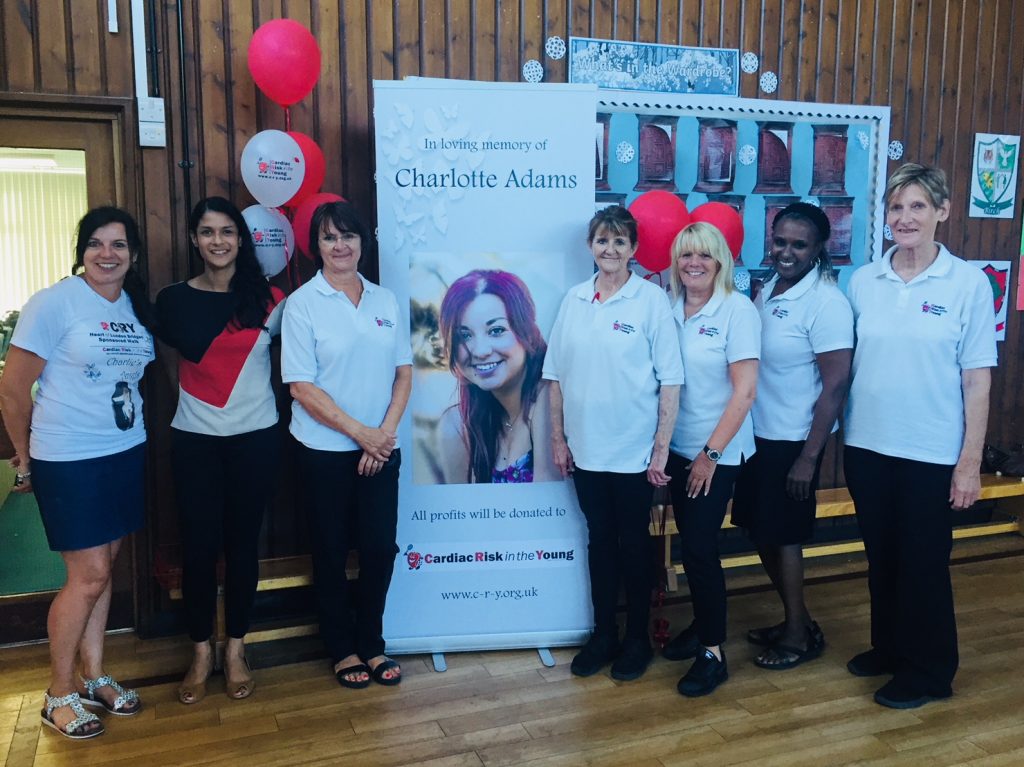
“I will never forget one particular example, which I think will stay with me forever. I was at a screening (quite early on in my Fellowship) when a young man came along who had booked a screening appointment and told he was due to run the London Marathon.’’
“I looked at his ECG and immediately thought ‘this looks abnormal’ so I requested an echocardiogram and pretty much on that same day I confirmed the diagnosis because it was so obvious that he had a condition called ARVC (arrhythmogenic right ventricular cardiomyopathy). In my opinion, CRY’s screening programme (it’s not just down to me, it’s a true team effort!) may have saved that young man’s life because if he’d have run a marathon (as we know intense training actually worsens this type of condition) we can’t be sure of the consequences.
“Because of CRY’s screening programme, we were able to refer him for further investigations and lifestyle advice, ensured he received the treatment he needed and that he was regularly monitored.’’
“This is one case when we certainly advised, “do NOT undertake something as strenuous as training for a marathon.”
“I’d also like to mention here the amazing camaraderie I saw within the CRY screening team – whether physiologists, admin staff, drivers, doctors or family volunteers, all of whom were often giving up their weekends to facilitate the events and ensure they ran smoothly. We visited every corner of the UK and you got to know everyone so well. I felt really lucky to have all those incredible people around me.
“Another highlight, as I briefly alluded to earlier was the exposure to elite athletes. I got to screen the 2019 Men’s Rugby World Cup squad just before the tournament which was certainly was a professional and personal highlight (!) as well as screening sportsmen and women within bodies such as Sky Cycling, RFL, the EIS (English Institute of Sport) and the LTA (Lawn Tennis Association). The experience I gained in having to navigate conversations with athletes on the rare occasions we identified abnormalities, was invaluable.’’
“As I mentioned, it’s not as simple as just saying “you can never exercise again.” This is someone’s livelihood – they may have a large sponsorship deal with huge amounts of money riding on it and nothing to fall back on. These are the kinds of conversations that you need to learn how to manage, and it must always be a carefully navigated, joint decision-making process.”
Any further thoughts and insight you’d like to share with CRY’s ‘community’ about the positive impact of a CRY Research Fellowship on you as a clinician with a specialism in heart conditions that can affect young people ?
“Oh, where to start! Again, the positive and humbling impact from my time as a CRY Research Fellow comes from the families I met who were just so incredibly warm, generous and welcoming. They looked after the screening team so well, often laying on the most wonderful refreshments etc. It sounds silly but sometimes you felt like a celebrity when you arrived! The families always told us how grateful they were although we always told them we were just doing our job. It was the families that absolutely galvanised us to keep screening and to keep getting better. Looking back, it was an absolute honour to part of the CRY Research Fellowship and CRY screening programme and I learnt so much – which hopefully I will be able to give back to my patients as I progress in my career as a cardiologist.
“And, my geography of the UK is now amazing too thanks to the CRY screening programme!
Finally, in addition to the research you presented at the European Society of Cardiology (ESC) 2023, can you tell us about some of your other key academic achievements since becoming a CRY Research Fellow?
“I have been fortunate to have been involved with a number of research projects since 2016, led by myself and as collaborative efforts with my many of my peers at St. George’s. In addition to presenting at over 20 national and international conferences, my key academic awards include:
- British Cardiovascular Society Best of the Best Abstract Prize Winner: Safety and outcomes of a high intensity exercise programme in young patients with hypertrophic cardiomyopathy: the SAFE-HCM study, Jun 2021
- British Cardiovascular Society Young Investigator Award (YIA) runner up: Six-month outcomes of a high intensity exercise programme in young patients with hypertrophic cardiomyopathy: the SAFE-HCM study, Jun 2021
- European association of Preventative Cardiology YIA runner up: Safety and outcomes of a high intensity exercise programme in young patients with hypertrophic cardiomyopathy: the SAFE-HCM study, Apr 2021
- St George’s, University of London Research Day PhD/MD Finalist: The SAFE-HCM trial, Dec 2020
- British Cardiovascular Society Best of the Best Abstract Prize Winner: The effect of ethnicity on LV adaptation to exercise, Jun 2018
“I have contributed to numerous editorials, peer-reviewed publications and research group papers. And, during my postgraduate tenure I directed a cardiovascular screening module and taught on the cardiac rehabilitation module within the MSc in Sports Cardiology at St George’s University, alongside supervising BSc and MSc students.
“I also enjoy contributing to the annual CRY International Conference (including the most recent event which took place at St George’s, University of London in October 2023).”
Mechanisms of adaptation to high intensity exercise in hypertrophic cardiomyopathy | European Heart Journal | Oxford Academic (oup.com)
J Basu, P Ricci, H Maclachlan, C Miles, R Bhatia, G Parry-Williams, S Sharma, M Tome, D Nikoletou, M Papadakis, J O’Driscoll
European Heart Journal, Volume 44, Issue Supplement_2, November 2023, ehad655.1841, https://doi.org/10.1093/eurheartj/ehad655.1841
The effect of ethnicity on left ventricular adaptation to exercise.
Basu J, Finocchiaro G, Miles C, Parry-Williams G, MacLachlan H, Tome Esteban MT, Sharma S, Papadakis M.Eur J Prev Cardiol. 2023 Nov 9;30(16):e69-e71. doi: 10.1093/eurjpc/zwad126.PMID: 37086472
Basu J, Finocchiaro G, Jayakumar S, Schönfeld J, MacLachlan H, Miles C, Parry-Williams G, Tome M, Papadakis M, Sharma S.J Am Coll Cardiol. 2022 Oct 11;80(15):1498-1500. doi: 10.1016/j.jacc.2022.08.715.PMID: 36202539 Free article.
Exercise and hypertrophic cardiomyopathy: Two incompatible entities?
Basu J, Malhotra A, Papadakis M.Clin Cardiol. 2020 Aug;43(8):889-896. doi: 10.1002/clc.23343. Epub 2020 Feb 12.PMID: 32048747 Free PMC article.
For a full list of research papers which Dr Joyee Basu has contributed to go to https://www.c-r-y.org.uk/crys-contribution-to-research/




